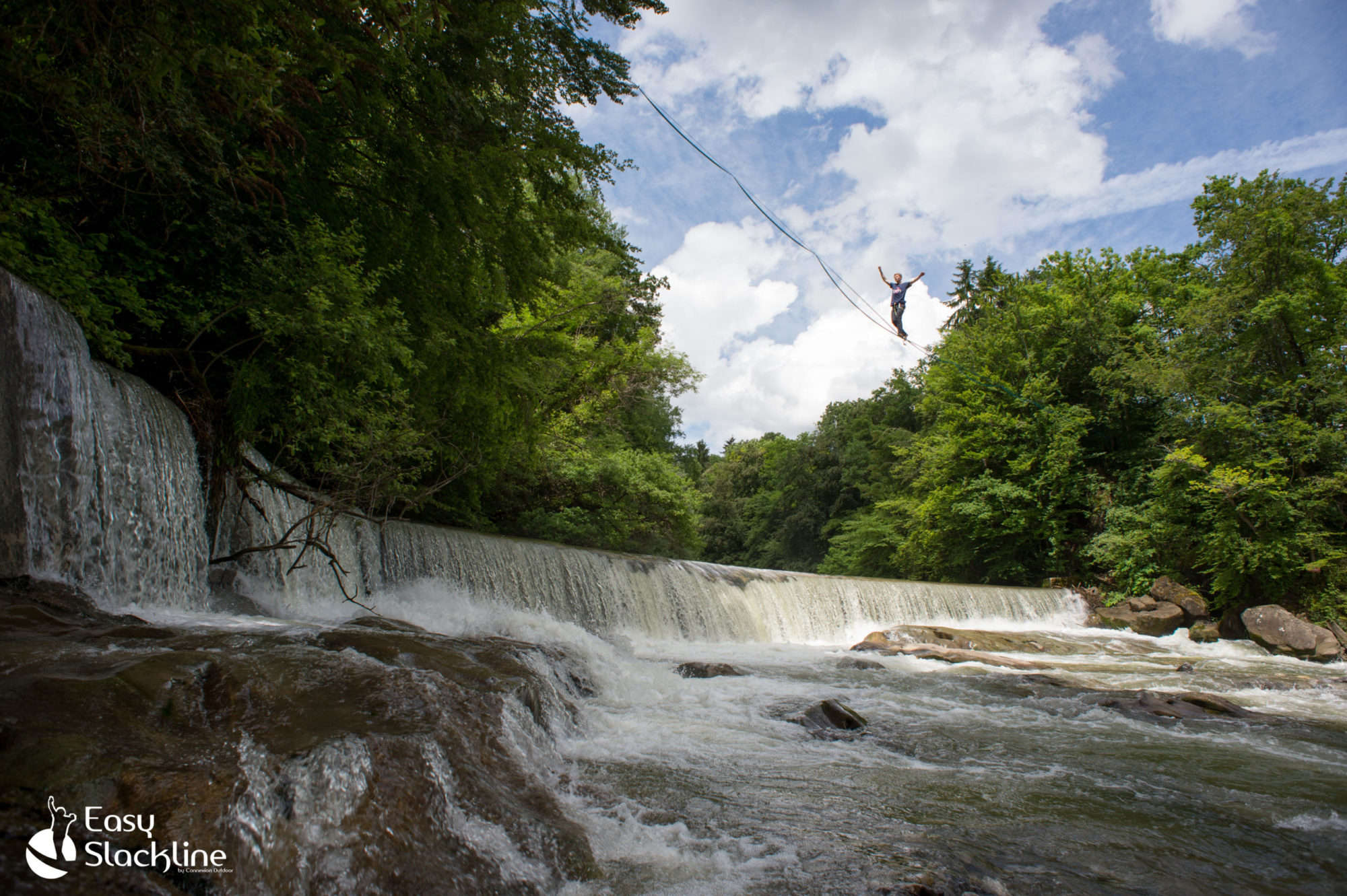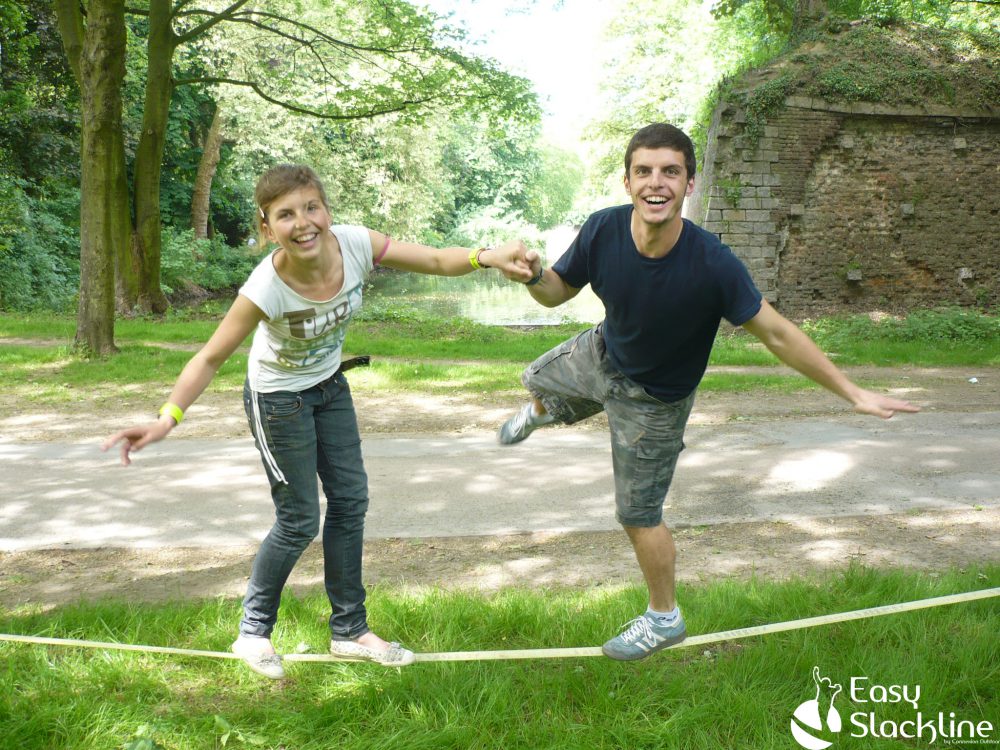Slackline benefits on body and mind
The health benefits of slacklining are often unsuspected. If you are not sure about starting to practice, let us convince you of all the positive effects this sport has to offer.
1. Slacklining, a sport that gently improves physical abilities
Overall balance and posture
The determining element of slacklining is the search for balance. Managing to keep your body in balance on a more or less unstable slackline is the very essence of this sport.
If it’s at first difficult to hold onto a slackline, it’s because how hard it is to manage our center of gravity. When properly positioned, it allows us to stand upright, without falling, on any surface.
The center of gravity moves accordingly to our base of support, our position and also the surface on which we move.
In slacklining, we might as well say that these are not the best conditions! In this practice, we give our brain and muscles a hard time to find the optimal center of gravity and avoid falling! However, the best slackliners are able to walk a slackline a bit longer than 2km !
Through training, the brain learns to manage the informations it receives about the oscillation of the slackline and instinctively readjusts the position of the whole body to achieve balance.
The development of balance requires the mobilization of several senses such as sight and touch (feet). Some organs are particularly stressed, solicited, such as the inner ear, which is the processing center for balance. Finally, proprioception (the ability of our muscles to find their bearings) also gives the brain useful information to balance.
The connection between all these different elements allows us to develop a heightened sense of balance and improve our stability.
The more you practice, the more you will progress and feel comfortable. This will also help you in your daily life and in your other sporting activities.
The very well-known TV show “C’est pas sorcier !” deals about balance through the example of slackline.
Proprioception

Proprioception is the set of nervous information transmitted to the brain allowing the regulation of posture and body movements. It is sometimes described as a “the sixth sense”. In particular, it allows our body to react adequately to an unexpected event (to avoid twisting an ankle or to save yourself by catching or not during a fall).
Proprioception works trough nerve sensors located on our muscles and joints. They transmit informations to the brain about position, movement, or contraction (for muscles) in order to adjust position or catch up.
Muscular development

Your body will get used to the practice of slacklining and will adapt, which will lead to the development of muscle groups. It will mainly develop the stabilizing and postural muscles, such as the triceps sural (calf), the hamstrings (rear thigh), the quadriceps (the front thigh), the gluteus maximus, the erectors of the spine (lumbar) and the head. (cervical), stabilizing muscles of the ankle and pelvis, abductors of the glenohumeral joint (shoulder) as well as the abdominal wall.
As with any activity, a regular practice of slacklining (not at a high-level, but even low level), allows the body to develop its balance and be in a good shape.
Even if some people make this discipline their favorite activity, it can simply be used as a complement to other sports (golf, skiing, snowboarding, skateboarding, surfing, martial arts …). It is sometimes used for in injury prevention by top athletes and in rehabilitation by some physiotherapists.
2. A good practice for the mental well-being
Focus
All slackliners will tell you that to successfully cross a slackline you need to be focused. As the situation is unusual for the brain, it needs all of its attentiveness to cross the slackline in balance. This requires an ability to ignore your surroundings and focus on a specific goal.
This essential skill is very useful in everyday life. We are constantly disturbed by our phone, our colleagues, family and friends, etc … It is important to sometimes to switch off and disconnect our mind to only accomplish the objective we have set for ourselves, in the most efficient way possible. To this purpose, slacklining is a very good training.
The “flow”
The state of intense concentration/attentiveness is also called the flow (see source at the bottom of the page). It is mainly reached in activities where there is a danger and requiring a high level of concentration, necessary to carry out the action.
This state causes an feeling of intense well-being, where the notion of time is distorted, where the effort felt is almost non-existent, and where the productivity reaches its maximum . This “trance state” erases all the « noises » from the external environment and nothing matters except the action in question. It is a form of constructive escape/ break from reality, when the destructive escape is caused by taking drugs.
The state of flow provides a feeling of well-being, it trains the brain to concentrate on one single objective, to select the tasks that need to be done while ignoring non-essential demands.

Breathing
Breathing is essential to keep our balance on the slackline. Deep and regular breathing efficiently supplies oxygen to muscles and brain, so that they can function at 100% capacity without tensing up and shaking. Learning to control your breathing allows you to better deal with your stress, anxieties or fears by reducing the physical reactions caused by these emotions.
The benefits of breathing exercices associated with slacklining will also be present in your everyday life.
Please note : When we struggle with physical and mental difficulties, we tend to hold our breath as in a state of apnea. To fight against this bad reflex which blocks the oxygen supply to the muscles and brain, just exhales, simply and solely focus on the action of breathing out. Because breathing in is a reflex that will automatically happen. Just remember : breath out.
Pushing your limits
Whether you start with a 5m long slackline or cross a highline 100m above the ground, slacklining helps to push your limits, to outdone yourself. You cross a distance that you had never succeeded, you try a freestyle trick that you have never tried before, you face the void and you put your foot on a highline for the first time…
Slacklining always pushes you to go further and do better than the previous times. Whether it is a child who send a short length, or an athlete who achieves a world record, slacklining (especially in a group) encourages us to surpass ourselves and boost our self-confidence.
Sharing with others
Slacklining is a sport that is often practiced in groups and mainly in nature, in the wild.
Slacklining has a growing community with deep sens of sharing, where all slackliners are inspired by each others.
The activity also give a good reason to be outside and get some fresh air, in parks, in woods or in the mountains.
Not sure how to find your community ? Or where to practice ? We have gathered for you all the places where you can slackline. No more excuses not to practice !

